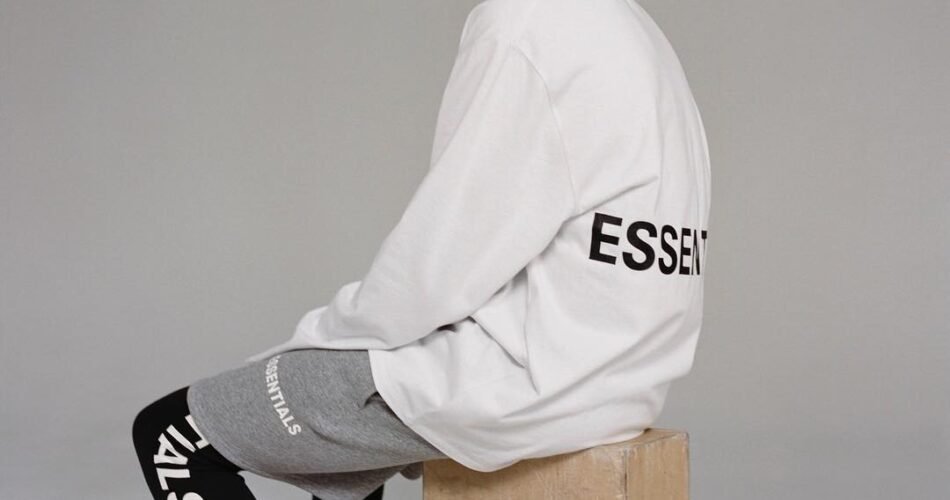High fashion has long been synonymous with exclusivity, extravagance, and artistic fantasy—runways filled with ornate gowns, avant-garde silhouettes, and inaccessible price tags. Yet, in recent years, an unexpected trend has quietly revolutionized the industry: the elevation of everyday Essential Clothing , sneakers, denim, T-shirts, and even tank tops have migrated from street corners and suburban closets to the front rows of fashion weeks and luxury boutiques. This blending of high and low has reshaped consumer expectations and redefined what it means to be fashionable.
The Quiet Power of Simplicity
The shift toward everyday essentials in high fashion reflects a broader cultural move toward minimalism, functionality, and authenticity. As lifestyles became more casual—driven in part by the pandemic and remote work—fashion followed suit. Consumers began to prioritize comfort and versatility over showmanship. The rise of “quiet luxury,” a term often used to describe unbranded but impeccably made staples, reflects this ethos. Brands like The Row, Loro Piana, and Toteme have thrived by emphasizing clean lines, superior fabrics, and muted tones that convey understated elegance.
These essentials, once seen as basic or utilitarian, now signal a refined aesthetic sensibility. A white T-shirt or perfectly tailored jeans can convey more about someone’s taste than a logo-laden jacket. It’s fashion that whispers, not shouts.
From Street to Runway
The blurring of high and low began well before the 2020s. Hip-hop culture played a significant role in recontextualizing everyday clothing. Artists like Kanye West, A$AP Rocky, and Pharrell Williams helped elevate streetwear into high fashion territory. In parallel, brands such as Supreme, Off-White, and Fear of God began collaborating with luxury houses, merging youth culture with traditional craftsmanship.
The watershed moment came when Virgil Abloh, founder of Off-White, was appointed artistic director of Louis Vuitton’s menswear in 2018. His debut collection featured utility vests, cargo pants, and tie-dye T-shirts—all once considered too informal for luxury fashion. The message was clear: everyday wear was no longer beneath the house of Vuitton—it was central to its future.
Luxury Reimagines the Basics
What makes an essential item “high fashion”? The difference lies in the details. Fabric quality, tailoring, and subtle design innovations set luxury essentials apart from their mass-market counterparts. A plain cotton T-shirt from a fast-fashion retailer might cost $10; the same silhouette in Peruvian Pima cotton with French seams from a brand like Sunspel or James Perse could fetch upwards of $100.
Consider the humble sneaker. Once relegated to gyms and playgrounds, it now commands serious fashion clout. Balenciaga’s chunky “Triple S,” Dior’s B27, and Louis Vuitton’s Archlight sneakers are not just accessories—they’re statement pieces. Their construction rivals that of a designer handbag, complete with hand-finishing, premium leather, and distinctive branding.
Even sweatpants and hoodies have been elevated. Brands like Fear of God Essentials, Aimé Leon Dore, and Brunello Cucinelli offer loungewear made from cashmere blends and sustainable organic cotton. It’s a fusion of comfort and craftsmanship—a new kind of luxury.
The Influence of Celebrities and Social Media
Celebrities have played a pivotal role in popularizing high-end essentials. Kendall Jenner in a basic tank and Bottega Veneta trousers, Rihanna pairing a plain white tee with a $5,000 coat, or Timothée Chalamet in Converse sneakers on the red carpet—all exemplify this new wave of effortless chic.
Social media has further fueled this movement. Platforms like Instagram and TikTok allow micro-trends and everyday styling to flourish. Fashion influencers often champion the art of dressing down—styling luxury items in relatable, approachable ways. The idea that “less is more” has taken hold, especially among Gen Z and millennials who value authenticity and personal expression over overt branding.
Genderless and Timeless
Another factor in the rise of essentials is their versatility across gender lines. A well-cut blazer, oversized shirt, or relaxed trouser transcends traditional menswear and womenswear categories. Brands like Acne Studios, COS, and Jil Sander embrace androgyny in their design language, offering essentials that appeal to a broad audience.
Essentials are also less trend-driven. Unlike statement pieces that may quickly fall out of favor, a crisp button-down or tailored coat has lasting appeal. This aligns with growing awareness around sustainability and the desire for a more conscious wardrobe. Investing in timeless pieces reduces waste and encourages thoughtful consumption.
The Democratization of Style
The elevation of basics signals a democratization of fashion. No longer is style confined to the elite who can afford couture or high-end designer pieces. Instead, taste and curation matter more. A Uniqlo T-shirt can be just as stylish as a luxury one when worn with intent and confidence Essentials Hoodies This shift is mirrored in the popularity of capsule wardrobes and the “uniform dressing” philosophy embraced by figures like Steve Jobs, Barack Obama, and designers such as Phoebe Philo. These icons prove that personal style is less about excess and more about consistency, quality, and comfort.
Conclusion: A New Fashion Paradigm
The rise of everyday essentials in high fashion marks a profound evolution in the way we perceive style, luxury, and self-expression. Fashion is no longer about dressing to impress others—it’s about dressing to reflect oneself. By elevating basics, the industry has redefined luxury to mean ease, quality, and purpose.
In a world that often feels chaotic and fast-paced, there’s something grounding about returning to the simple, familiar pieces we know and love. The T-shirt, the sneaker, the hoodie—once overlooked, now revered—represent more than fashion trends. They are the building blocks of a new sartorial language: inclusive, intentional, and quietly powerful.
